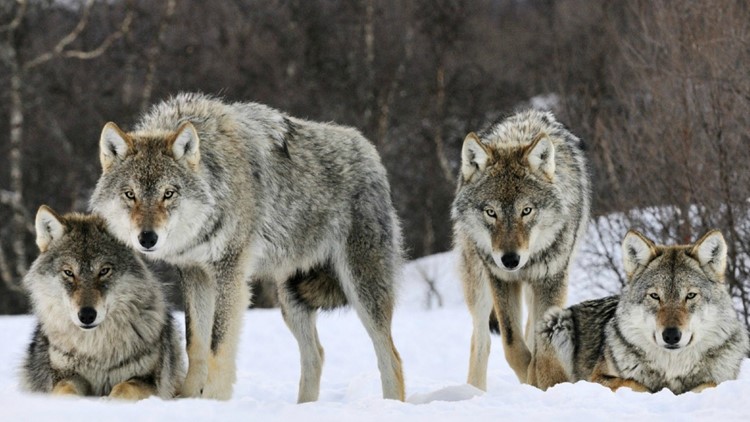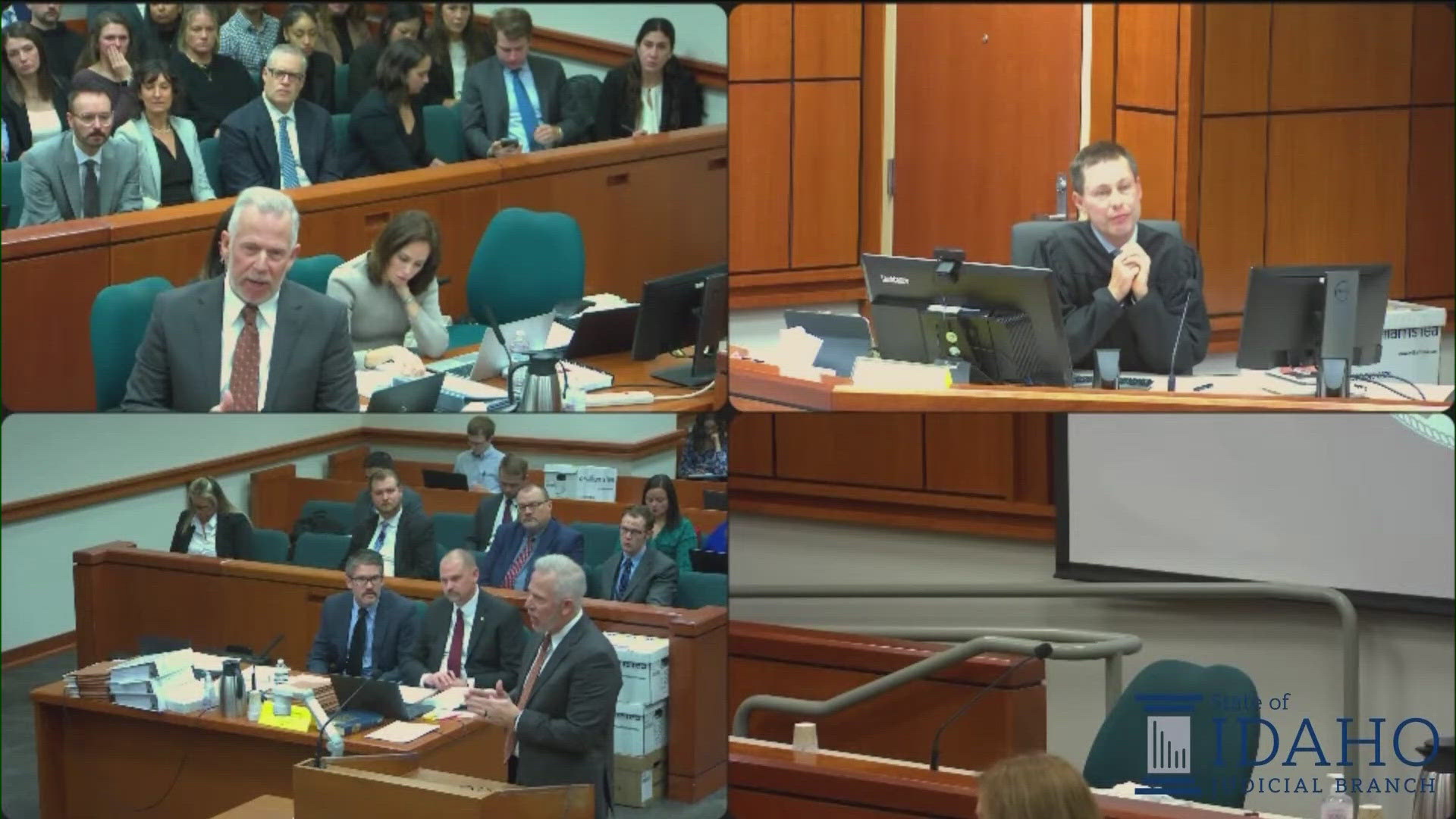BOISE, Idaho — Some areas in Idaho would be declared wolf-free zones, and other areas where the animals have killed livestock would have increased wolf-killing opportunities under legislation proposed Wednesday.
The Senate Resources and Environment Committee voted to clear the way for a hearing on the measure put forward by Republican Sen. Bert Brackett, a rancher in the area designated for wolf-free zones.
"Wolf numbers have continued to increase, livestock depredation remains unacceptably high," he said. "More needs to be done. Ranchers' livelihood is being threatened by wolves."
Federal officials say there were 175 wolf attacks on livestock in Idaho in fiscal year 2019, which ended on June 30.
The Idaho Department of Fish and Game said Wednesday that about 460 the animals were killed in 2019 with hunting, trapping and the killing of wolves that preyed on livestock. The agency doesn't have an estimate for the number of wolves in the state.
Specifically, the legislation would create wolf-free zones in 11 Fish and Game hunting units that roughly cover the southwestern part of the state. Those areas are thought to have few if any wolves, and Brackett said he'd like to keep the animals from expanding into them.
In addition, the legislation would create chronic depredation zones. Those zones would be created in Fish and Game hunting units where Fish and Game or the U.S. Department of Agriculture's Wildlife Services have confirmed wolf attacks on livestock in any four of the previous five years.
There are 19 hunting units scattered across the central part of the state that would qualify as chronic depredation zones.
In both wolf-free and depredation zones, wolves could be killed year-round. Idaho already allows wolf hunting most of the year across the state, with the season generally closing when the animals are in dens and having pups.
The legislation contains a provision that if wolf numbers in Idaho fall below 200 and 20 packs, state officials would review the wolf management policies.
Fish and Game stopped tracking wolf numbers after taking over management from the U.S. Fish and Wildlife Service following wolves' removal from the Endangered Species List. However, Fish and Wildlife could resume management if wolf numbers fall below certain levels.
Fish and Game said the wolf population is monitored similarly to bears and mountain lions by looking at hunter and trapping harvest numbers, age structure and other data. That information, the agency has said, indicates the wolf population is not near where federal authorities would resume control.



